<< Previous | Displaying results 251-300 of 372 for "victims" | Next >>
Anne Frank is among the most well-known of the six million Jews who died in the Holocaust. Discover who Anne Frank was and what happened to her.
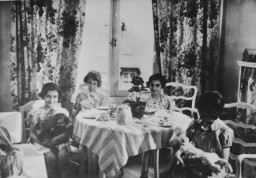
The term Final Solution to the Jewish Question was a euphemism used by Nazi Germany’s leaders. It referred to the mass murder of Europe’s Jews.
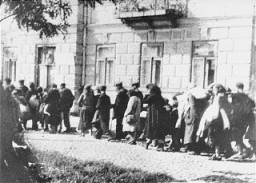
The term “pogrom” historically refers to violent attacks on Jews by local non-Jewish populations. Learn about pogroms before, during, and after the Holocaust.
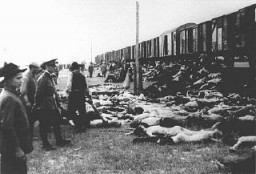
Resistance comes in many forms, both violent and non-violent, collective and individual. Learn more about Jewish resistance to Nazi oppression.
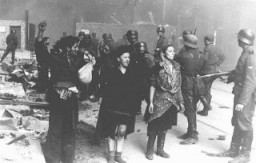
The SS was the elite guard of the Nazi regime and became a virtual state within a state in Nazi Germany. Learn about its role in carrying out Nazi policies.
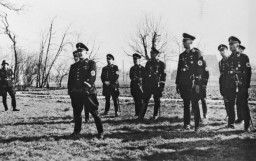
In April 1945, US troops encountered a barn on the outskirts of Gardelegen where the SS and its accomplices had massacred over 1,000 concentration camp prisoners.
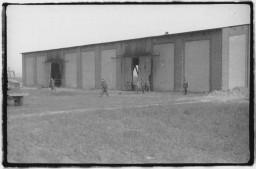
During the Holocaust, Jews were forced into ghettos with terrible living conditions, overcrowding, and starvation. Learn more about life in the Lodz ghetto.
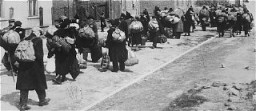
Survivors faced huge obstacles in rebuilding their lives after the devastation of the Holocaust years. Learn about some of the challenges they faced.
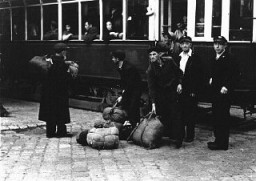
Under the most adverse conditions, prisoners initiated revolts in killing centers. Learn more about prisoner uprisings in Treblinka, Sobibor, and Auschwitz.
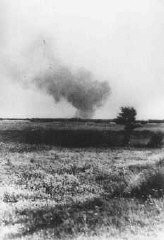
The War Refugee Board was formed in 1944 by executive order under President Roosevelt. It was tasked with the rescue and relief of victims of Nazi oppression.
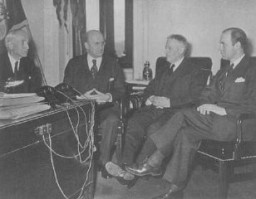
The liberation of concentration camps toward the end of the Holocaust revealed unspeakable conditions. Learn about liberators and what they confronted.

Theories of eugenics shaped many persecutory policies in Nazi Germany. Learn about the radicalization and deadly consequences of these theories and policies
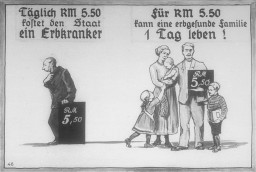
After WWII and the fall of the Nazi regime, Holocaust survivors faced the daunting task of rebuilding their lives. Listen to Thomas Buergenthal's story.
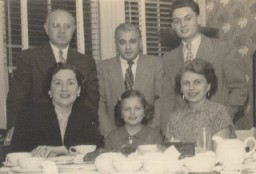
Learn more about the history of Stanisławów during the Holocaust and World War II.
The Jewish children of Lodz suffered harsh conditions after the German invasion of Poland. Read excerpts from diaries where they recorded their experiences.
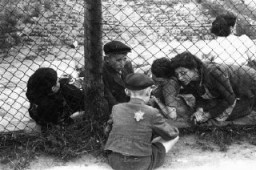
Budy was one of more than 40 subcamps that the SS administered as part of the Auschwitz camp complex. Learn more.
Explore firsthand testimony about the occupation of Mlynów, the establishment of the ghetto, resistance activities, and the destruction of the ghetto.
After WWII, prosecutors faced the challenge of assessing the guilt of propagandists whose words, images, and writings had supported Nazi brutality and mass murder.
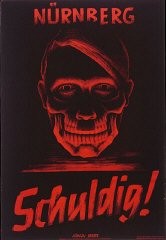
Learn about France during the Holocaust and WWII, the liberation of France, postwar trials, and the legacy of Vichy France’s collaboration with Nazi Germany.
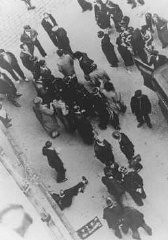
Beginning in the 1920s, Adolf Hitler and the Nazi Party emphasized their desire to create a Volksgemeinschaft (People’s or National Community) based on the foundations of race, ethnicity, and social behavior. Once in power, the Nazis aimed to shape a Volksgemeinschaft according to their ideological goals. Test
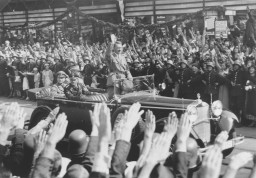
Erich was one of five children born to observant Jewish parents. They lived in Vsetin, a town in Czechoslovakia's Moravia region that straddled the border with Slovakia. Some 70 Jewish families lived in the town of 12,500 persons. There, Erich's family owned a grocery store and operated a sawmill. Erich attended a trade school where he became an expert in lumber and forestry. 1933-39: The Germans kept Erich's family's sawmill operating after they occupied their region in March 1939. Since Erich had a…
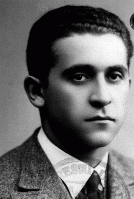
Szlamach was one of six children born to Yiddish-speaking, religious Jewish parents. Szlamach's father was a peddler, and the Radoszynski family lived in a modest apartment in Warsaw's Praga section on the east bank of the Vistula River. After completing his schooling at the age of 16, Szlamach apprenticed to become a furrier. 1933-39: During the 1930s Szlamach owned a fur business. Despite the Depression, he was hoping the economy would turn around so that he could make enough money to move into his own…
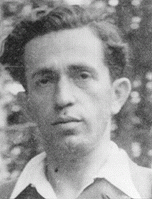
A chart detailing physical characteristics of a Romani (Gypsy) individual, c. 1938. Dr. Robert Ritter and his team created extensive family trees and genealogical charts in order to identify, register, and classify all Romani people living in Nazi Germany. During the Nazi era, Dr. Robert Ritter was a leading authority on the racial classification of people pejoratively labeled “Zigeuner” (“Gypsies”). Ritter’s research was in a field called eugenics, or what the Nazis called “racial…
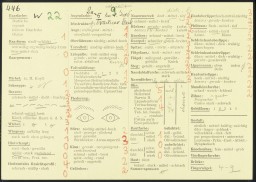
The German ship SS "St. Louis" departed from Hamburg for Cuba with almost 1,000 Jewish refugees on board on May 13, 1939. Most of the passengers had Cuban landing certificates. However, the Cuban government invalidated the certificates. When the "St. Louis" reached Havana on May 27, most of its passengers were denied entry. After the United States also refused to accept the refugees, the ship returned to Europe, docking at Antwerp. Britain, France, Belgium, and the Netherlands then agreed to accept the…
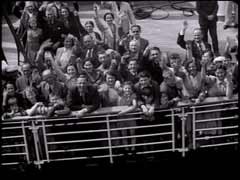
On the night of November 14-15, 1940, almost 500 German bombers attacked the British industrial city of Coventry in central England. The bombers dropped 150,000 incendiary bombs and more than 500 tons of high explosives. The air raid destroyed much of the city center, including 12 armament factories and the historic Saint Michael's Cathedral. This footage shows scenes from the aftermath of the attack. The bombing of Coventry came to symbolize, to Britain, the ruthlessness of modern air warfare.
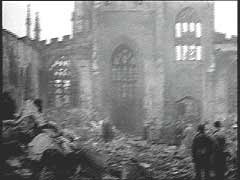
After word reached America of the Nazi killing of European Jewry, pressure mounted on the Roosevelt administration to help European Jews. To spur action, playwright Ben Hecht prepared a memorial to the Jewish victims of Nazi persecution, "We Will Never Die." The pageant, sponsored by the Zionist Revisionist Bergson Group, was part of a mass demonstration at Madison Square Garden in New York City. Later seen in other US cities, the show was part of the Bergson Group's effort to pressure Washington to act…
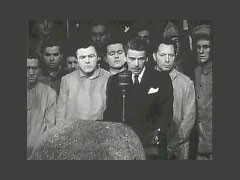
In April 1944, after the German occupation of Hungary, Agi, her mother, six-year-old brother, and aunt were forced into the Munkacs ghetto. Before deportation to Auschwitz, Agi was forced to work in the ghetto's brick factory. At Auschwitz, Agi, then 14 years old, was chosen as part of a Sonderkommando. This forced-labor detachment had to sort the clothing and possessions of inmates and victims at Auschwitz. In January 1945, Agi and other prisoners were forced on a death march from Auschwitz. She was…
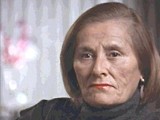
As a US Army sergeant, Raymond fought in the Battle of the Bulge. In May 1945, his unit was deployed to the Mauthausen camp in Austria to bulldoze mass graves for the victims. He watched as German civilians, on US orders, hauled bodies to the mass graves. He also saw stronger camp survivors pull clothes off their weaker counterparts to replace their own tattered uniforms. Raymond went on to Mauthausen's Ebensee camp and Gusen, guarding SS men.
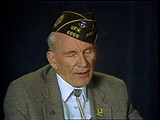
Judge Thomas Buergenthal was one of the youngest survivors of the Auschwitz and Sachsenhausen concentration camps. He immigrated to the United States at the age of 17. Judge Buergenthal devoted his life to international and human rights law. He served as chairman of the United States Holocaust Memorial Museum’s Committee on Conscience; was named the Lobingier Professor of Comparative Law and Jurisprudence at the George Washington University Law School; and served for a decade as the American judge at…
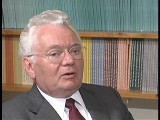
Judge Thomas Buergenthal was one of the youngest survivors of the Auschwitz and Sachsenhausen concentration camps. He immigrated to the United States at the age of 17. Judge Buergenthal devoted his life to international and human rights law. He served as chairman of the United States Holocaust Memorial Museum’s Committee on Conscience; was named the Lobingier Professor of Comparative Law and Jurisprudence at the George Washington University Law School; and served for a decade as the American judge at…
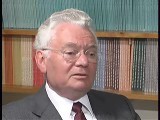
In the 1980s and 1990s, historian Peter Black worked for the US Department of Justice Office of Special Investigations, as part of a team tracking and prosecuting suspected war criminals. Black later served as the Senior Historian at the United States Holocaust Memorial Museum.
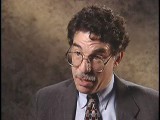
Dr. Robert Ritter and Eva Justin examine a young boy interned in a Zigeunerlager (“Gypsy camp”). Cologne, Germany, c. 1937-1940. During the Nazi era, Dr. Robert Ritter was a leading authority on the racial classification of people pejoratively labeled “Zigeuner” (“Gypsies”). Ritter’s research was in a field called eugenics, or what the Nazis called “racial hygiene.” Ritter worked with a small team of racial hygienists. Among them were Eva Justin and Sophie Ehrhardt. Most of the people…

May 5, 1945. On this date, US troops liberated Mauthausen concentration camp. Days before, a group of prisoners took control of Mauthausen.
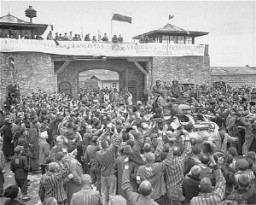
August 15, 1941. On this date, Heinrich Himmler inspected Soviet prisoners of war at a Nazi camp in Minsk, Belarus.
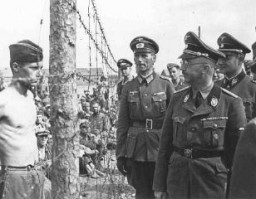
October 15, 1941. On this date, German authorities began the deportation of Jews from central Europe to ghettos in occupied eastern territory..

Each of Germany’s six European Axis allies participated in the “Final Solution” by murdering Jews or by transferring them to German custody. Learn more.
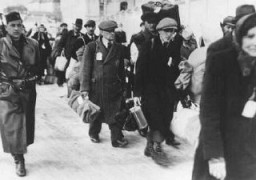
Efforts to bring the perpetrators of Nazi-era crimes to justice continue into the 21st century. Learn more about postwar trials and their legacies.
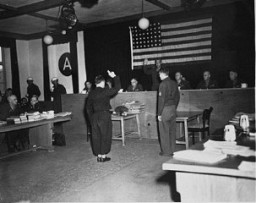
The Harrison Report criticized conditions in the DP camps, called for changes in the treatment of Jewish DPs, and recommended allowing them to emigrate to the US and Palestine.
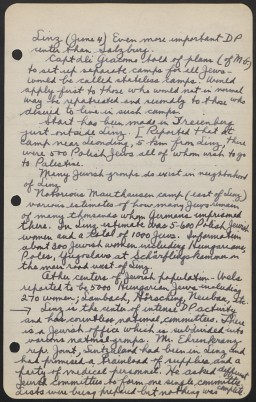
The Nazi regime established the Buchenwald camp in 1937. Learn about the camp’s prisoners, conditions there, forced labor, subcamps, medical experiments, and liberation.
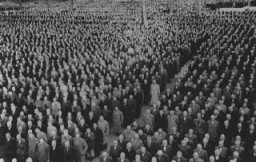
Blood libels were false allegations that Jews used the blood of non-Jewish children in rituals. Nazi propagandists used this false charge in their antisemitic propaganda.
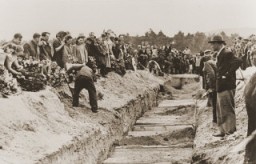
During WWII, the Children’s Aid Society (OSE) operated 14 children's homes throughout France to save Jewish children from internment and deportation to killing centers.
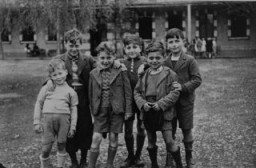
Under the Vichy regime, the Les Milles camp held foreign Jews before emigration or, in most cases, deportation to German concentration camps and killing centers.
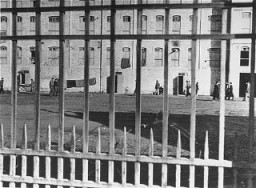
The Burmese military has targeted the Rohingya people because of their ethnic and religious identity. The military’s actions constitute genocide and crimes against humanity. Learn more
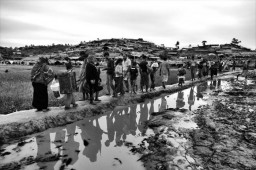
"We Will Never Die" was a 1943 musical stage performance that raised awareness among Americans about the murder of European Jews. Learn more.
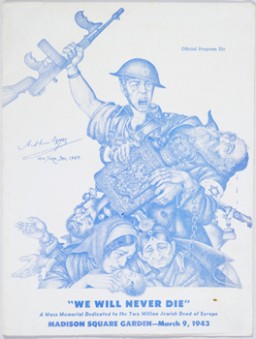
The 1944 Warsaw uprising was the single largest military effort undertaken by resistance forces to oppose German occupation during World War II.
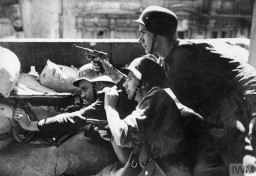
The Nazi book burnings of 1933 sparked responses from anti-Fascist organizations, Jewish groups, and writers in the United States. Learn more.
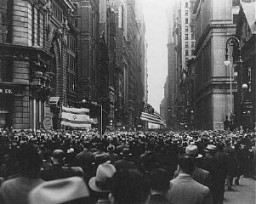
Survivor Elie Wiesel devoted his life to educating the world about the Holocaust. Explore key events in the world and his life from 1952 until his death in 2016.
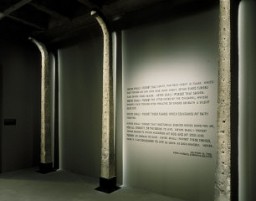
Explore a timeline of key events during the history of the Treblinka killing center in German-occupied Poland.
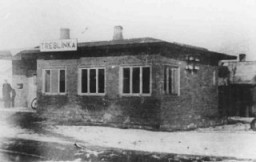
Explore a timeline of key events in the history of the Auschwitz camp complex in German-occupied Poland.
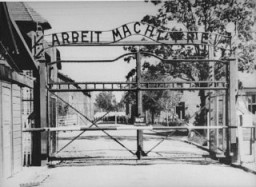
Nazi Germany and its allies established over 44,000 concentration camps and incarceration sites during the Holocaust. Read about the Nazi camp system.
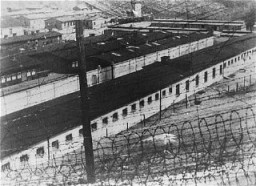
We would like to thank Crown Family Philanthropies, Abe and Ida Cooper Foundation, the Claims Conference, EVZ, and BMF for supporting the ongoing work to create content and resources for the Holocaust Encyclopedia. View the list of donor acknowledgement.